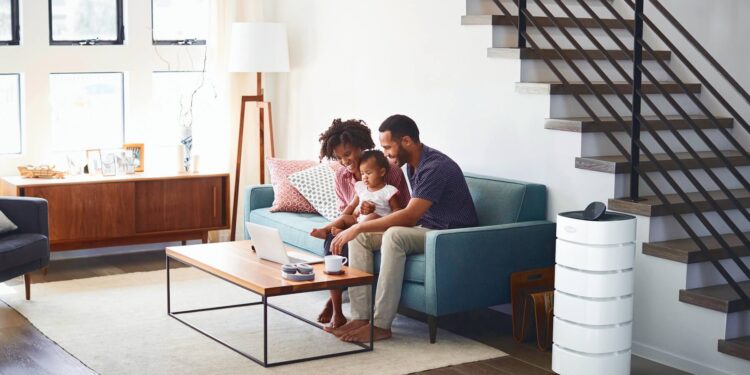As Americans continue to spend more time at home, it’s important to support the health and comfort of those living spaces. Regularly cleaning and disinfecting surfaces is an important step, but one often overlooked aspect of a home’s health and comfort is its air quality.
Proactively addressing potential air quality issues can result in cleaner air and more comfortable living. There are multiple factors that may affect your home’s air quality.
* Indoor particulate matter consists of the visible and invisible airborne particles in the air that can enter your nose and lungs, some triggering allergies, asthma and other potential health problems.
* Carbon monoxide, sometimes called the “silent killer,” is a colorless, odorless gas that can build up to dangerous levels if not properly ventilated, causing headaches, drowsiness and, in some cases, death.
* Too much humidity can encourage the growth of bacteria and mold. Too little humidity can dry out your skin and wood furniture.
* Volatile organic compounds are emitted by everything from household cleaners and paint to new furniture and dry-cleaned clothing. These compounds can have an adverse impact on your short- and long-term health, so proper ventilation is essential.
* The level of air pollution in your community can affect your indoor air quality since opening a door or window brings that air indoors.
If you’re unsure about your home’s unique air quality needs, you may benefit from a tool like Carrier’s “Improve My Air” quiz, which was designed to help homeowners and renters determine which indoor air quality solution is a good fit for their spaces. You can also take steps to improve the indoor air quality of your home with these practical tips.
Change your filters. Clean filters support your heating and cooling system’s ability to operate efficiently.
Control humidity levels. When the air is too damp, the chance of bacteria and mold growth is higher, but when it’s too dry, your skin, lungs and furniture may feel the impact. Many experts recommend a humidity level of 40-50% for optimal air quality.
Invest in an air purifier. An air purifier is a simple way to improve your indoor air quality. Carrier has just introduced a new room air purifier that doesn’t require professional installation, making it an easy and portable solution for both homeowners and people renting their spaces. The purifier comes in two sizes and is powerful enough to purify the air in rooms up 550 square feet. Its high-performance fan and high-efficiency filtration system capture airborne pollutants and its 360-degree design filters air from multiple angles while easy-to-change filters make it a low-maintenance solution for busy households.
Strategically place greenery. Plants are natural air filters, so placing a few indoor plants around your living space may help improve your indoor air quality while also enhancing your home’s decor. Small plants like ferns and lilies are among the best options for pulling contaminants from the air.
Find more solutions for improving your home’s indoor air quality, and take the “Improve My Air” quiz, at CarrierAtHome.com.
Photos courtesy of Getty Images


